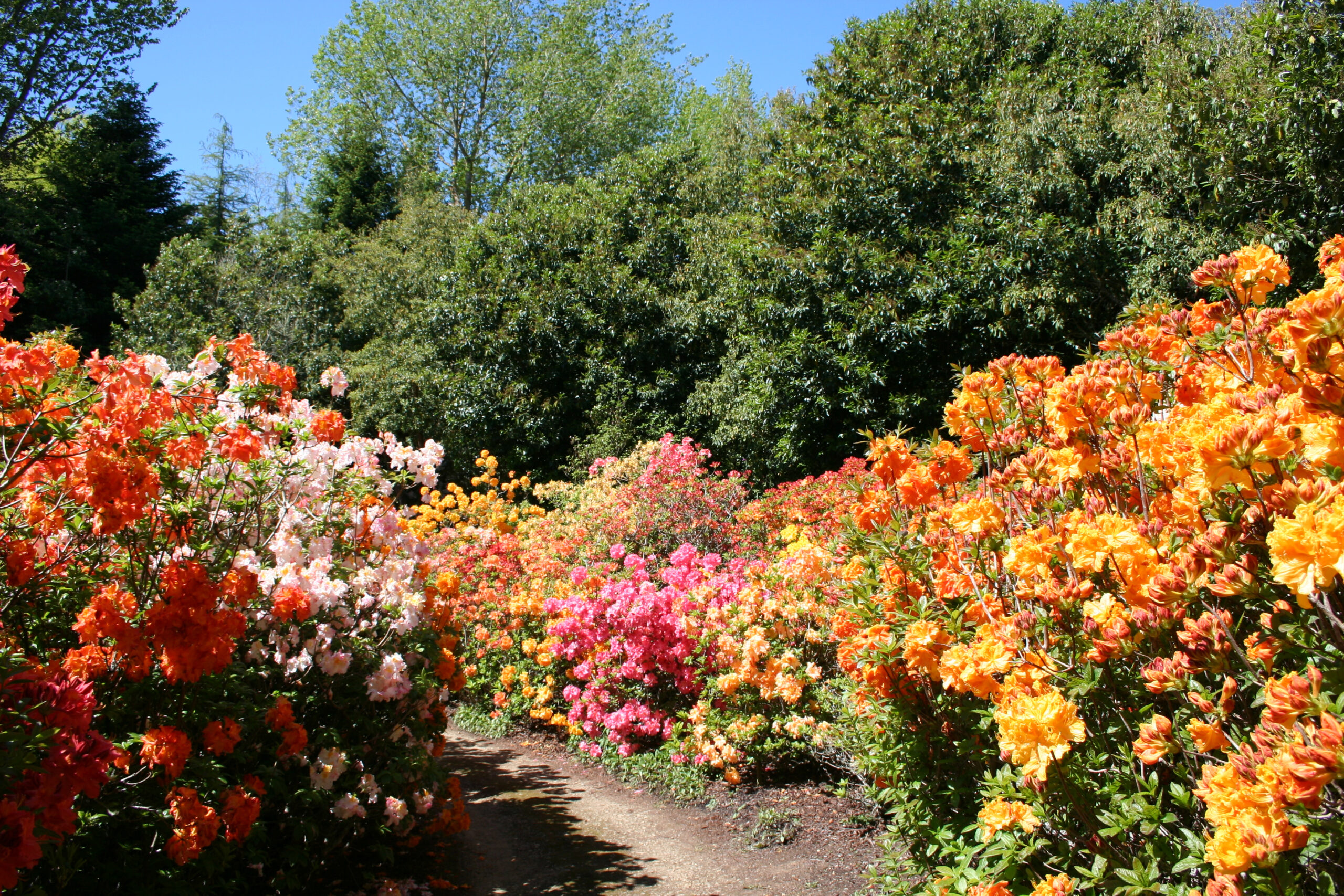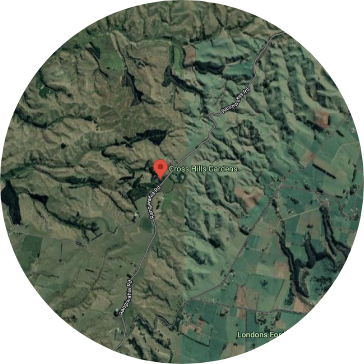Rhododendrons, although evergreen plants, do lose some of their leaves. Most varieties hold their leaves for two years and then in the third year, as summer progresses and autumn nears, the lower leaves drop off the stems. At this stage they tend to go quite yellow and spotty and when touched, or the wind blows, they just fall on the ground.
CAUTION Do not confuse the above phenomenon with the new season’s leaves going yellow. If this occurs your plant is obviously not happy and steps need to be taken to rectify the problem. (See the paragraph on Chlorosis below and read your own reference books) If you need help please phone us, many factors come into play when plants show this unhealthy yellowing of the current season’s growth.
There are several reasons for this occurring. The most common cause is Water Stress, see Planting & Watering. Branches of plants can also be cracked or broken by pets or children.
If you can definitely eliminate the above two causes for the wilting of the leaves damage to the roots is a strong possibility.
Phytopthora or root rot is not common but can be a problem in areas with heavy soil and poor drainage. Plants grown in this type of soil may not be very healthy and are therefore more susceptible to disease.
The symptoms to look for are complete curled in leaves hanging very limp and they are usually brittle to touch. Sometimes the whole plant can be affected and by the time it is discovered, it will be too late to save the plant. Other times only one branch may be affected and this should then be pruned off and burnt. The fungicide Alliette is the product that should then be sprayed over the foliage to reduce the risk of the fungus spreading further.
It is not a good policy to replant a rhododendron in a spot where one has already died, if phytopthora is suspected as being the cause of death. Do not spread soil from this area into other areas of your garden. Wash all tools after working in this area.
Remember phytopthora only attacks the odd plant and by maintaining good drainage and sanitation you lessen the likelihood of this disease occurring. As a precaution and if you suspect you have had a problem, after reading these cultural hints, a small investment in the new product called Trichopel will be money well spent.
This is yellowing of the leaves or patches of yellow between the veins on the leaves. It is usually caused by problems such as alkaline soil, excess water, overdeep planting, insect damage, lack of fertiliser or mineral deficiency. If the soil is well drained, acid and fertilised, the plants are correctly planted and the possibility of grass grubs chewing the roots can be ruled out, the chlorosis will probably be due to a mineral deficiency such as lack of iron or magnesium. To correct an iron deficiency iron sulphate can be applied at a rate of 200gms per square metre. This can be dissolved in water and watered on. For magnesium deficiency a spray of Epsom Salts can be applied to the leaves at the rate of two tablespoons per 4.5 litres of water. A new convenient product to treat either one plant or several is SEQUESTRON, a liquid plant food that works through leaves and roots to cure leaf yellowing on rhododendrons and azaleas as well as other acid loving plants. Please scroll through our garden products and add SEQUESTRON to your shopping cart.
Thrips can damage leaves especially in warmer areas (noticed by the silvering of the top side of the leaf). Thrips can best be controlled by using a systemic insecticide such as Cross Hills Super Thrips Killer, see Tree Health Bands. Alternatively, for smaller rhododendrons, spray about five times, approximately 21 days apart, starting in early December. Pay particular attention to the underside of the leaf. Red spider and other leaf chewing insects will also be controlled by the above procedure. Our native grass grubs can also severely damage rhododendron and azalea root systems and can be recognised by yellowing of the leaves and a loose root system in the ground. Usually younger plants are the worst affected, the signs usually show up in the Autumn.
We suggest you dig up the plant and replant adding LAWNGUARD in and around the rootball. These granules will give the plant enough protection for several years.
Seldom needed unless plants become leggy or are to be rejuvenated. If you prune in the early Spring when the sap is actively moving, you are more likely to get flower buds forming for the next season. Pruning immediately after flowering will still give new plant shoots but the likelihood of flowers buds setting for the following year lessons considerably. Before pruning your plant, ensure there is clear sky above it. This is essential to assist in the development of healthy new growth on this plant. To encourage branching in young upright plants pinch out the terminal shoot.

The breaking off of spent flower heads tends to encourage flower buds for the next season and provides your plant with the stimulus for stronger new growth. Take care not to damage the growth buds under the remains of the flower truss.
View or print the Cross Hills Planting Guide.

Garden
365 Days
Nursery & Plant Centre
7 Days a week from Monday 9th June 2025 - 1st December 2025
10.30am - 5pm
Garden Café
Catering is available for pre-booked groups only, subject to availability, please contact our office to discuss.
339 Rangiwahia Road
RD 54
Kimbolton 4774
New Zealand
P. 06 328 5797
E. office@crosshills.co.nz

Solution by Webtech